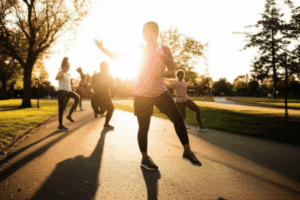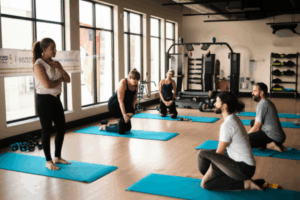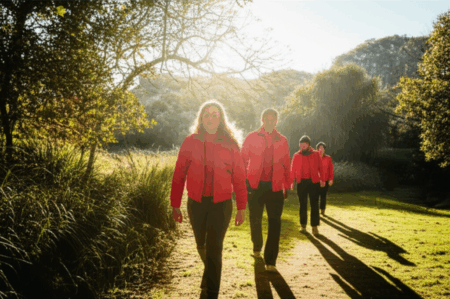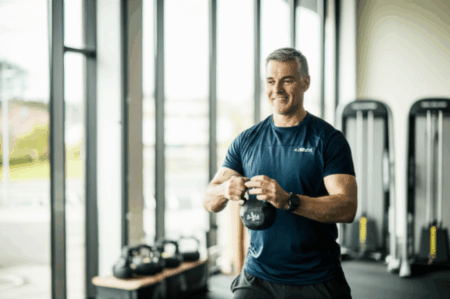Starting a new exercise regime at 69 and experiencing profound benefits for knee health is not just inspiring; it’s a testament to the remarkable adaptability of the human body, regardless of age. Many people believe that joint pain and stiffness are inevitable parts of aging, often leading to a more sedentary lifestyle. However, emerging research and countless personal stories, like the one that inspired this article, demonstrate that targeted physical activity can be a powerful antidote to age-related knee issues, even into our later years.

Why Knee Pain Becomes Common as We Age
As we get older, our knees, which are crucial for nearly every leg movement and shock absorption, endure years of wear and tear. This can lead to several common issues:
- Cartilage Degeneration: The protective cartilage cushioning our joints can thin over time, leading to conditions like osteoarthritis (OA). OA is a prevalent condition in seniors, affecting over 60% of older adults who are overweight. When cartilage diminishes, more stress is placed directly on the joints, causing pain and stiffness.
- Muscle Weakness: The muscles surrounding the knee—quadriceps, hamstrings, glutes, and calves—can weaken with age, providing less support to the joint. This weakness can increase strain on the knee and its stabilizing ligaments, contributing to pain and a higher risk of injuries.
- Reduced Flexibility and Mobility: Decreased activity can make joints stiffer and less flexible, making everyday movements like walking or bending more challenging.
Many seniors might avoid exercise due to fear of exacerbating pain or further damaging their joints. However, doctors now widely acknowledge that insufficient use is actually detrimental to joint health.
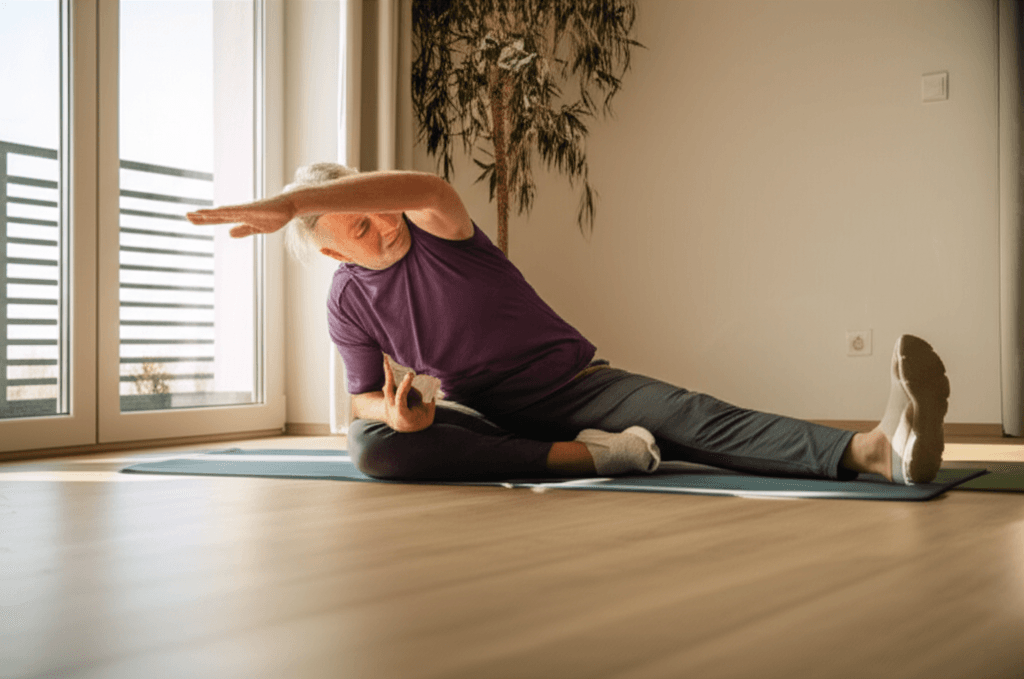
The Profound Benefits of Exercise for Knee Health in Older Adults
Far from causing more damage, appropriate exercise is considered the most effective non-drug treatment for reducing pain and improving movement in people with osteoarthritis. Regular physical activity offers numerous advantages for aging knees:
- Pain Reduction: Strengthening the muscles around the knee helps the body tolerate stress on the joint, significantly reducing pain symptoms. Exercise can also decrease swelling and provide a good exchange of nutrients for cartilage, acting as “motion is lotion.”
- Improved Mobility and Flexibility: Exercise helps maintain and improve the flexibility and range of motion in joints. Stronger muscles and better flexibility make daily activities, such as climbing stairs or getting up from a chair, easier.
- Increased Stability and Balance: Strengthening exercises, particularly those that improve balance, help prevent falls, which are a major concern for older adults and can lead to severe injuries.
- Cartilage Health: Movement allows joint fluid to circulate nutrients to the cartilage, much like a sponge, helping to prevent degeneration and inhibit inflammation.
- Weight Management: Maintaining a healthy weight significantly reduces the load on weight-bearing joints like the knees, alleviating pressure and slowing cartilage wear.
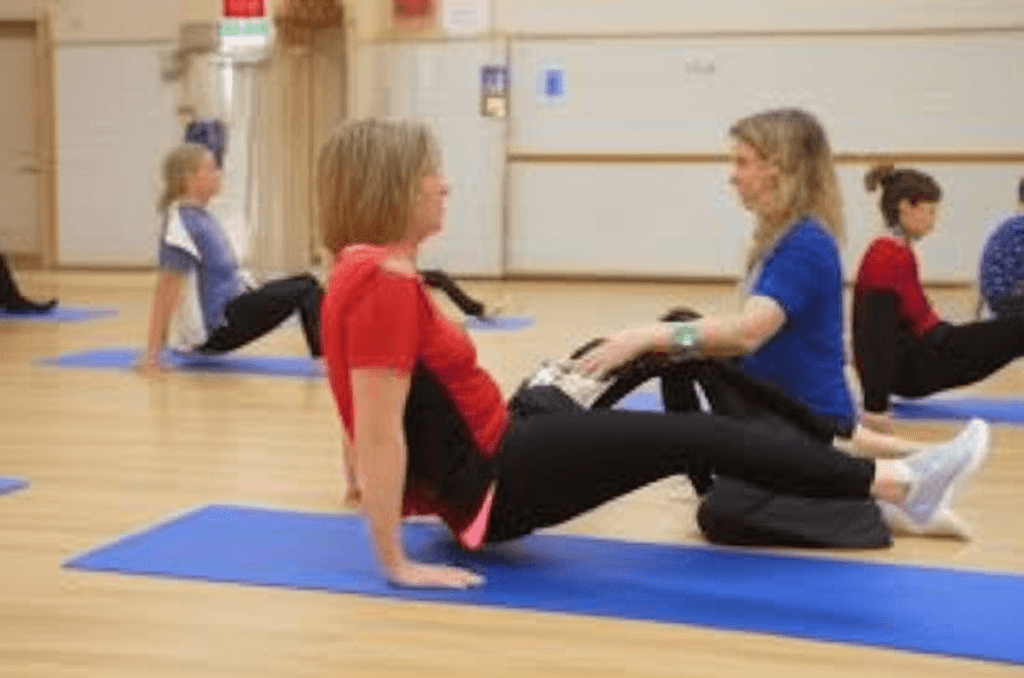
Recommended Low-Impact Exercises for Stronger Knees
When starting an exercise program, especially with existing knee concerns, low-impact activities are key. These movements minimize stress on the joints while still building strength and flexibility. Always consult with a doctor or physical therapist before beginning any new exercise regimen to ensure it’s appropriate for your specific condition.
Here are some excellent low-impact exercises for knee health:
Cardiovascular Endurance (Aerobic Exercises)
These activities get your heart rate up without jarring your joints:
- Walking: A simple yet effective exercise that gently activates leg muscles, improves circulation, and strengthens the heart. Start slow and gradually increase duration.
- Swimming and Water Aerobics: The buoyancy of water reduces the impact of body weight on weakened or aching knees, making movement easier. Water provides gentle resistance, strengthening muscles without putting excess strain on joints.
- Stationary Biking/Cycling: This provides a smooth, controlled motion that strengthens quadriceps and hamstrings, crucial for knee stability, with minimal joint stress. Recumbent bikes can be particularly gentle on the knees.
- Elliptical Training: Mimics walking or running motion with reduced impact, strengthening the lower body.
- Tai Chi and Yoga: These gentle practices focus on slow, fluid movements, balance, and flexibility, improving joint range of motion and reducing stiffness.
Knee-Strengthening Exercises
These exercises specifically target the muscles supporting the knee joint:
- Quad Sets: Lie on your back with legs straight. Tighten your thigh muscle, pressing the back of your knee into the bed or floor. Hold for 5 seconds, relax, and repeat. This strengthens the quadriceps, essential for standing and climbing stairs.
- Straight Leg Raises: Lying on your back with one leg bent, keep the other leg straight and lift it a few inches off the surface. Hold for 3-5 seconds, then slowly lower. This builds quadriceps strength to support weak joints.
- Seated Knee Extensions: Sit in a chair and extend one leg straight out, holding for a few seconds before lowering. This strengthens the quadriceps and improves knee flexibility.
- Calf Raises: Standing while holding onto support, rise onto your tiptoes and hold for 3 seconds before slowly lowering. This strengthens calf muscles, aiding balance and reducing knee strain.
- Pillow Squeeze: Lie on your back with bent knees, a pillow between them. Squeeze the pillow for 5 seconds to strengthen inner leg muscles that support the knee. Can also be done seated.
- Wall Squats/Chair Squats: Lean against a wall or use a chair for support. Slowly slide down as if sitting, aiming for a 90-degree bend if comfortable, and hold. This strengthens glutes and quadriceps, enhancing knee stability.
- Glute Bridges: Lie on your back with knees bent and feet flat. Lift your hips toward the ceiling, squeezing your glutes. This strengthens glutes and hamstrings, which are crucial knee stabilizers.
- Mini Lunges/Step Ups: Using a low step or stair, step up with one foot, bring the other to meet it, then step down. This mimics everyday movements and strengthens quads, glutes, and hamstrings.
Flexibility and Stretching
Gentle stretching before and after workouts helps maintain flexibility and reduce injury risk. Focus on holding stretches for 20-30 seconds.
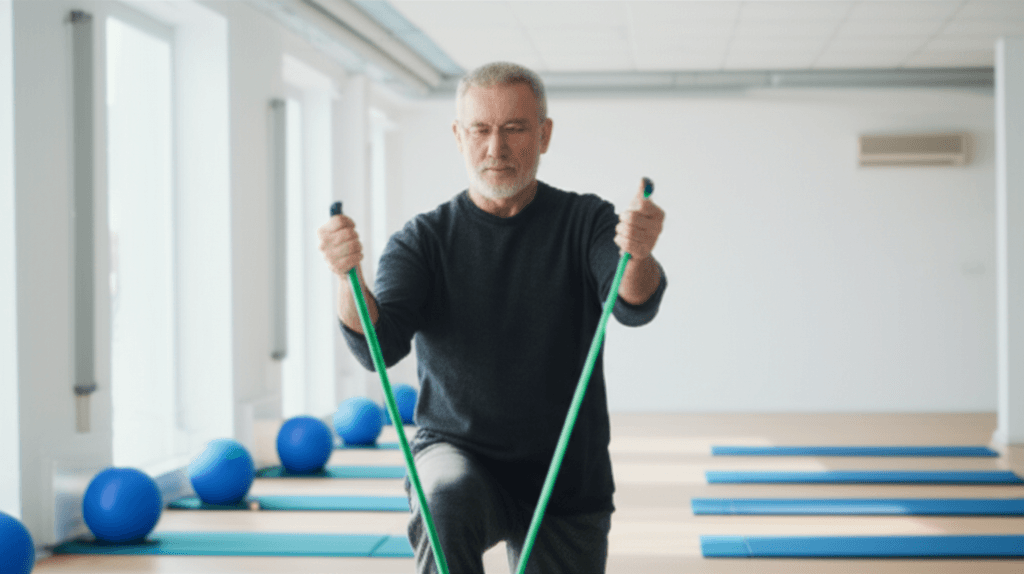
Important Considerations for Seniors Exercising with Knee Issues
- Listen to Your Body: While some initial discomfort can occur as muscles adapt, exercise should not make existing knee pain worse overall. If pain persists or increases significantly, consult a healthcare professional.
- Gradual Progression: Start with light exercises and slowly increase intensity, repetitions, or duration as your strength and flexibility improve. Consistency is key, even if it’s “little and often.”
- Warm-Up and Cool Down: Always include 5-10 minutes of light warm-up (like a brisk walk) and cool-down stretches.
- Professional Guidance: Consider working with a physical therapist to develop a tailored exercise plan, especially if you have significant knee pain or arthritis. They can help ensure proper form and adjust exercises as needed.
- Footwear: Wear supportive, well-cushioned shoes.
- Hydration and Nutrition: Proper hydration and fiber intake can also support senior knee health.
Embracing an active lifestyle, even later in life, can truly work wonders for your knees, reducing pain, improving mobility, and enhancing overall quality of life. The journey begins with that first step, or perhaps, that first gentle knee exercise.

